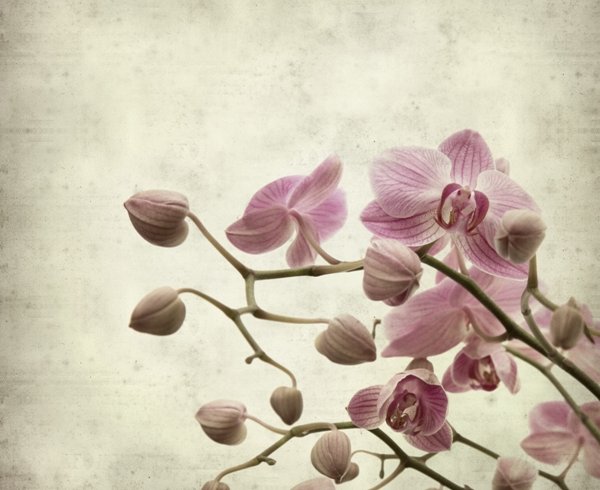Πως να περιποιηθείτε τις Ορχιδέες σας (Phalaenopsis orchids) EN version
How to care for Phalaenopsis orchids
by Sisse Gjetting
The orchid family, Orchidaceae, is one of the two largest families of flowering plant, counting almost 30.000 species. Most species are tropical, epiphytes (growing on other plants and trees) are found in all climate zones on all continents except for the Antarctica. Many grow in tropical lowland forests, some in high altitude in the Himalayas, and some, like the beautiful bee orchids of Greece, are soil orchids. In other words, orchids have adapted to almost all possible growth conditions on earth.
The most commonly encountered house orchids today are hybrids (crosses between different species) of the genus Phalaenopsis (from greek φαλαινα, which is the name of the moth, that these flowers resemble). Due to extensive breeding and cultivation efforts, which has resulted in the mass production and variety of hybrids available today, Phalaenopsis orchids are easy to grow inside for non-specialists, and even easy to rebloom, in contrast to the species they originate from. However, for good results, it is always useful to remember what is the natural growth habit of the plants and try to come as close to this as possible with your house plants.
Growth requirements:
Water: Probably the most important thing to remember when growing Phalaenopsis is never to leave water in the pot after watering! Phals should be allowed to dry out between waterings. You can tell by looking at the thick aerial roots: when they go grey, it is time to water. It depends on the potting medium, but usually once every 7-10 days in the winter, and twice a week in the summer. Water Phalaenopsis by soaking it in a bowl for 5-10 minutes, (rinsing is not enough). Always make sure the pot is well drained after watering. The pot should never be soaking in water, as this will drown the roots. Tap water can be used, but rain water is the best. Phalaenopsis prefer high humidity, so spraying/misting lightly in the morning can help improve air humidity, but be careful not to spray in the shoot, which will rot if there is water left.
Temperature: Phalaenopsis are warm orchids. They enjoy night temperatures above 18 deg., and 20-28 deg. during the day. Be careful with open windows in the winter as they do not like draught, and although they can tolerate higher or lower temperatures for a short period of time, they should never be placed in temperatures below 18 degrees, as this will stress the plant and affect the growth. After the flowers have withered, the plant needs to rest for a while. It can be moved to a place with a few degrees cooler temperatures, this will induce new flowering after some months.
Light: Phalaenopsis are low light orchids. This means they should never be placed in direct sunlight – they can actally get a sunburn! They will grow well in a north-, east- or west-facing window, or further away from a south facing window. The leaves can tell if the amount of light is right: the leaves should be olive green. If the leaves become red, the plant receives too much light, if the leaves become darker, too little light. If the plant does not re-bloom, try to increase the amount of light.
Fertilizer: Most orchids require very small amounts of nutrients. Use a balanced orchid fertilizer (20-20-20) at half strength with every other watering (or less). Be careful, it is very easy to overdo it. Generally it is better with too little than too much!
Repotting: After a few years the bark mix which the plant proably came with, will be degraded, and the plant ought to be repotted. Repotting should be done when the plant is in active growth, which is when the roots are light green at the tips. If the roots look healthy, repot in medium size bark mix, not in soil or sphagnum moss, as this retains too much moisture, and never in normal potting soil! Cut off any dead roots. If there are only few healthy roots, mix some sphagnum moss in the bark mix. Preferably pot in a clear plastic pot with many holes for ventilation.
Reblooming: In general, never cut back anything green – only remove dead tissue, like roots or dry flower spikes. If the flower spikes are green after flowering, they may still produce more flowers. The spikes can be cut back (even if they are green, this is the only exception) to the third eye, which will promote more flowering. However, flowering drains a lot of energy, and at some point the plant will need a rest before starting a new flowering cycle.
Please remember:
ALL orchids in nature are protected by national laws and international treaties. This is because most species are endangered, threatened or near extinct. NEVER, ever dig up orchids in nature!!! They belong there, and you probably can’t grow them anyway…
If you feel adventurous for more special orchids, there are great webshops shipping to Greece, e.g.
http://www.shop.schwerter-orchideenzucht.de
http://www.orchideen-wichmann.de
http://www.kopf-orchideen.de/s/
Phalaenopsis culture sheet:
• Temperature: Warm – 18-28 degrees
• Watering: 1-2 times per week, let dry out between waterings.
• Fertilizer: Half strength orchid fertilizer every 2nd watering.
• Light: Low, half-shade. No direct sunlight.

No comments.